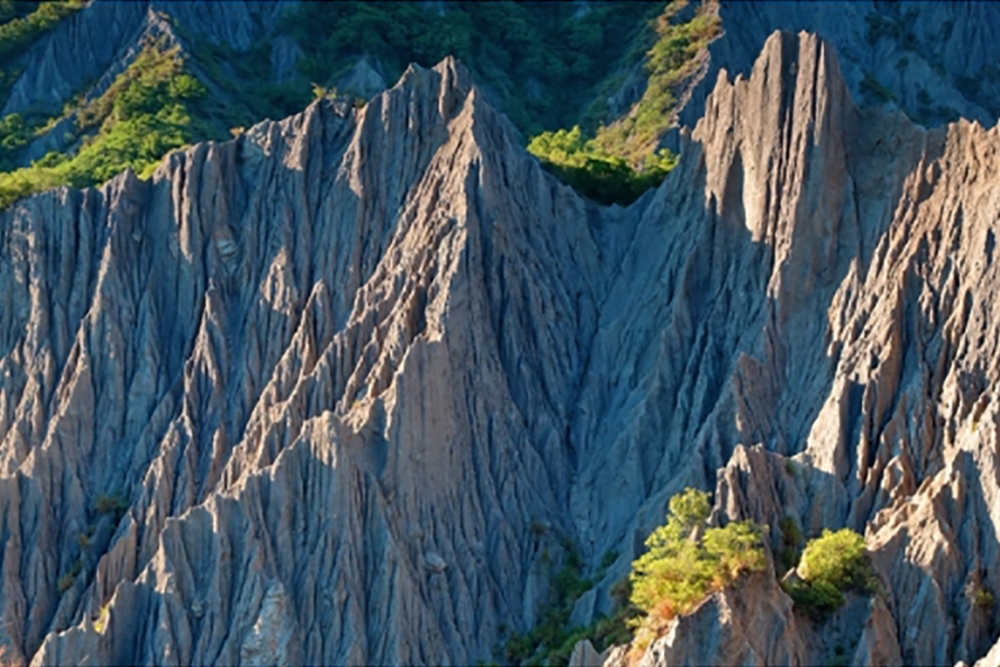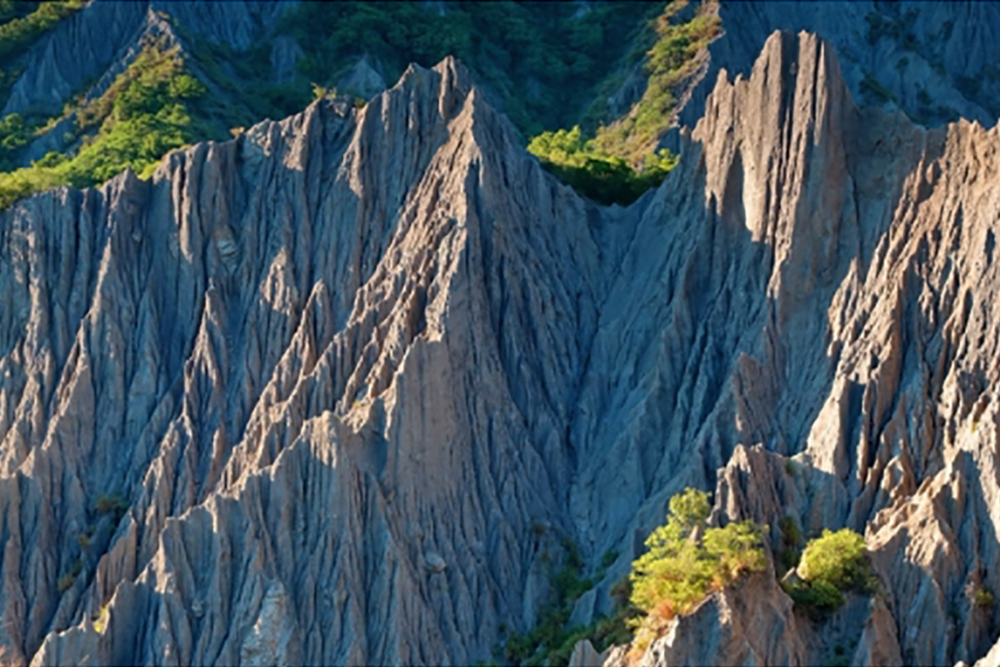The Lichi Badlands are located on the banks of the Beinan River, in Taitung's northern suburbs. Go north along the country road that connects the west side of the Taitung Bridge with Lichi Village, and after passing Lichi Bridge for around 400 meters, you will see a large slice of barren mountain wall with many gullies.
The Lichi Mélange is formed from fine pellets of mudstone, which are mixed with many clayey minerals, making its opening very small, with poor permeation and ventilation. Consequently, the rain water erodes the surface, forming one line after another of gullies, resulting in the ferocious looking badlands. The most common plants here are the giant miscanthus, white popinac, Taiwan acacia and switch sorrel. Most of these plants grow on the lower levels of large, amassed amounts of collapsed soil and rocks. In contrast, Chinese pistaches and Taiwan Arundo formosana grow on the top of the collapsed soil and rocks, and along the tops of the gullies.
The East Rift Valley National Scenic Area Administration has built pavilions, wooden footpaths and explanation signs. Deposits that hundreds of thousands of years ago were hidden deep in the sea are now seen standing before one's very eyes, making a deep impression on the viewer.
At the foot of the mountain located on the other side of Beinan River from the Lichi Badlands is the sight of a cliff a little over two kilometers wide. This is the consequence of Beinan Conglomerate rain erosion taking place towards the tip of the Central Mountain Plain which forms "Little Huangshan". The Beinan Conglomerate, which is a part of the Eurasian tectonic plates, differs from the Lichi Badlands, which belong to the Philippine tectonic plates. Thus, coming to the Lichi Badlands is like visiting a natural geological classroom, where one can see the consequences of the collision between the Philippine and Eurasian tectonic plates.


